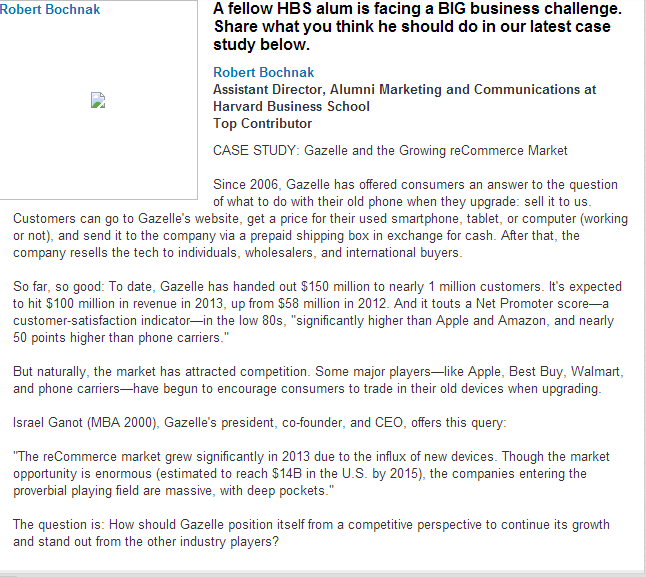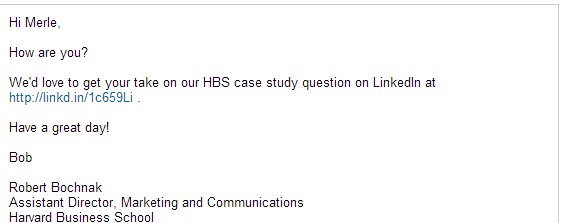Collaboration Works: How Social Media Managers Can Make the Most of Their Interactions with Fellow Communications Professionals
Nothing beats a good rivalry.
Whether it’s the Red Sox versus the Yankees, the Hatfields versus the McCoys, or Kanye West versus, well, everyone, these complex, often dysfunctional relationships keep life interesting. Just imagine where we’d be if fans of Star Trek and Star Wars actually got along? If they did, we wouldn’t have such epic–and, let’s be honest here, VERY, VERY dorky–throwdowns like this.
(And to think, I thought I was uncool growing up. At least I never donned a stormtrooper outfit, though I’m not sure what would have happened if I was given the opportunity.)
Not all rivalries are a good thing, though. The tense relationships that can occur between social media professionals and their communications/marketing counterparts falls into this category. Tension between these parties is understandable. As a social media manager, my primary goal is to engender as much engagement as possible. While “content” is important, I rarely generate it myself; the only “content” I create is of the user-generated variety in the form of, for example, Twitter chats (some examples from my work with the Harvard Business School (HBS) alumni office can be found at http://storify.com/hbsalumni/the-year-in-review and http://storify.com/hbsalumni/where-did-blackberry-go-wrong).
On the other hand, the people who write articles, press releases, brochures and other marketing and communications materials are all about content. Engagement (at least of the measurable kind) is secondary and, as a former magazine writer, I can relate to how difficult it was to gauge engagement with my audience (Case in point: The magazine I wrote for had a circulation of 11,000 and I heard from our readers maybe 40-50 times over the course of a decade. Contrast this with my social media work; I often have interactions with as many individual alumni, via @HBSalumni, during a single WEEK).
But these relationships don’t need to be strained. They can actually be mutually beneficial and in this post I’ll share how we have managed to do this at HBS.
All Together Now
Three things happen when you spend winter break watching a High School Musical marathon with your six-year-old daughter.
1. You have some seriously messed up dreams when you go to sleep.
2. You become convinced that every basketball game should conclude with a choreographed song and dance.
3. You end up singing songs from the films in your car, in line for coffee, and during meetings (yes, this did happen and yes the song was “I Don’t Dance“).
But there is something to be said for the messages conveyed in these songs, particularly those expressed in “We’re All in This Together.” The song, played at the conclusion of the first High School Musical, highlights that, to be successful, everyone from the star athlete to the “nerd” needs to be working toward the same goal (in the case of the movie, making sure that Troy and Gabriella can participate in the “Big Game” and the “Academic Decathlon,” respectively, while also making their audition for the school musical).
This collective “ethos” is also critical when it comes to having productive relationships between social media managers and their communications colleagues. At HBS, we have done this (and by “we” I mean my supervisor) by having bi-weekly content meetings to share what we’re working on. These gatherings are critically important. They help us, as a group, determine the best ways to collaborate and they put EVERYONE on an equal footing. This second point is important since it’s very easy for social media professionals to work in a vacuum and feel that they are on the outside. We don’t create content, at least not in the traditional sense, and it’s difficult to express our work in a tangible way (e.g., a magazine editor can hold up his or her magazine, someone in web communications can pull up a website they have created). But, with an office culture that breeds collaboration and a more fluid hierarchy it’s possible for ALL communications professionals–those in social media included–to work together effectively.
Choose the Right Approach and Channel
With the right office culture in place, the next step is finding a communications-related project that’s a good fit. Typically, this is a project that will gain moderate to high traction on social media (i.e., Twitter, LinkedIn, or Facebook) and will lead to the creation of user-generated content that can be used in a print or online publication.
We followed this approach at HBS when a few of our writers embarked on a new Case Study initiative. The objective of the project was for an alumnus/alumna to share a business challenge he/she was having and we would solicit ideas and other feedback via social media. Since we were hoping to get longer form answers, we immediately ruled out Twitter based on its character limit. We considered Facebook, but decided against this platform due to the difficulty we had experienced in bringing alumni “across channels.” By “across channels,” I’m referring to our practice of promoting an engagement opportunity via Twitter with the hope that alumni would make the jump over to Facebook (note: While we’ve had some success doing this, our results have been so erratic that we’ve abandoned this practice for the time being). Our best option, therefore, was to use LinkedIn as the primary engine for this initiative (see below).
Once we posted this item, we went to work in earnest. Since our goal was, naturally, to have broad alumni participation we sent a series of LinkedIn messages to members of our alumni group. Our rationale for doing this was basic; if we could help “seed” the responses a bit, we believed the discussion might go “viral.” Well, as viral as a discussion within our group could become. So, we sent the following message to a number of alumni who had responded to a previous question or article we had shared on LinkedIn.
And then we waited.
We didn’t have to wait long. Comments, like those listed below, came in within hours of our messages, and at last count our outreach led to 30 alumni comments–many of which were included in the case study story our editor wrote.
Take Two
We took a different approach for another case study. Like with the previous example, our content manager hoped to use social media as a means to generate user-generated content that could be used in a print or online publication. He began by posting the following to our alumni site.
Once this information was posted, we sent targeted tweets to our “highly engaged” alumni (for more on alumni Twitter engagement see my post, “Making the Case: Explaining the Return on Investment (ROI) of Your Social Media Efforts”) over the course of 2 to 3 days using TweetDeck. In the body of the tweets, we used vernacular common to HBS alumni; we told them they were being “cold-called.” The tweets also included the url for the specific alumni web page. While we didn’t get the volume we were hoping for, our content manager got more than enough copy for his article, as illustrated below.
Ultimately, I feel that these efforts were a success. I got the engagement I was, as always, looking for and our content manager got the copy he needed for his work. Furthermore, this process was incredibly helpful for me when it came to using LinkedIn, specifically. I had never thought of using direct messages to encourage conversation and I probably wouldn’t have if I hadn’t been forced to think–and I HATE to use this overused term, but I think it applies here–outside the box.
Was this post helpful? Is there anything I missed? Please share your thoughts in the comments section.
Robert Bochnak manages social media for the Harvard Business School’s alumni office. He’s also the former writer and editor of GradMatters: The Blog for Tufts GSAS.
Follow Robert on Twitter at https://twitter.com/RobertBoc.








